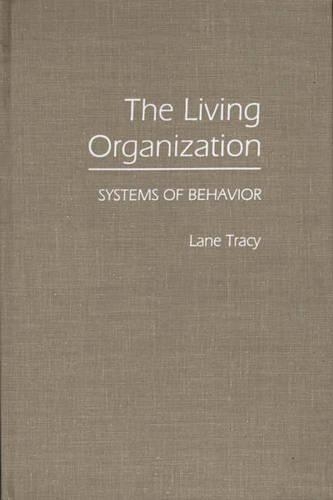
The Living Organization: Systems of Behavior
(Hardback)
Publishing Details
The Living Organization: Systems of Behavior
By (Author) Lane Tracy
Bloomsbury Publishing PLC
Praeger Publishers Inc
1st June 1989
United States
Classifications
Tertiary Education
Non Fiction
302.35
Physical Properties
Hardback
229
Description
The focus on the dynamic nature of organizations as living systems is instructive and worthy of consideration. The book provides a unique perspective on the variables that influence the effectiveness of today's organizations. Advanced undergraduates and up. Choice Describing his book as a disciplined excursion through the world of organizations, Tracy has developed a unique approach to the study of organizational behavior. Using James G. Miller's living systems theory as his framework, the author describes organizations as living--displaying the same basic function, structures and processes as a plant or animal. The Living Organization gives us a milti-level picture of the workings of organizations. The three levels--individual, group, and organization--work simultaneously. Diverging from current theory, the author asks us to treat these levels concurrently, not sequentially. He uses the same set of basic concepts for all three levels. The reader will be stimulated by the interesting juxtaposition of topics in this book. Topics, normally unrelated, form unusual combinations reflecting the author's basic theme that all the topics of organizational behavior are more closely linked than previously realized. This book is excellent reading. It takes a giant step toward providing the field of organizational behavior with a theoretical backbone. Utilizing the living systems approach to its fullest, The Living Organization integrates the field of organizational behavior at its three systematic levels and it links these concepts and theories so that connections between needs and motivation and between decision-making and leadership are made clear.
Reviews
Tracy's goal to provide a unified, theoretical framework for understanding organizational behavior relies heavily on the work of James G. Miller (Living Systems, CH, Oct'78). Organizations are conceptualized as open, living systems that should be analyzed at different levels simultaneously. Some reader knowledge of systems theory is assumed. Traditional theories of motivation, leadership, decision making, etc., are summarized, critiqued, and incorporated into the living-systems framework. The major topics in the field all receive some attention. However, Tracy emphasizes some concepts (i.e., needs) more than others (i.e., perception, decision making, communication). Practical applications and research implications are discussed briefly. The systems approach integrates diverse positions on organizational behavior. . . . The focus on the dynamic nature of organizations as living systems is instructive and worthy of consideration. The book provides a unique perspective on the variables that influence the effectiveness of today's organizations. Advanced undergraduates and up.-Choice
"Tracy's goal to provide a unified, theoretical framework for understanding organizational behavior relies heavily on the work of James G. Miller (Living Systems, CH, Oct'78). Organizations are conceptualized as open, living systems that should be analyzed at different levels simultaneously. Some reader knowledge of systems theory is assumed. Traditional theories of motivation, leadership, decision making, etc., are summarized, critiqued, and incorporated into the living-systems framework. The major topics in the field all receive some attention. However, Tracy emphasizes some concepts (i.e., needs) more than others (i.e., perception, decision making, communication). Practical applications and research implications are discussed briefly. The systems approach integrates diverse positions on organizational behavior. . . . The focus on the dynamic nature of organizations as living systems is instructive and worthy of consideration. The book provides a unique perspective on the variables that influence the effectiveness of today's organizations. Advanced undergraduates and up."-Choice
Author Bio
LANE TRACY is a Professor of Management at the College of Business Administration, Ohio University and former Editor-in-Chief of the Mid-American Journal of Business.
